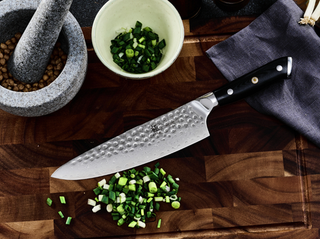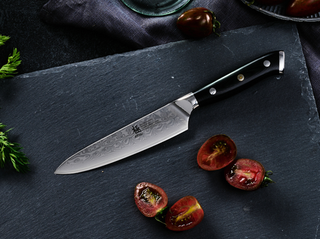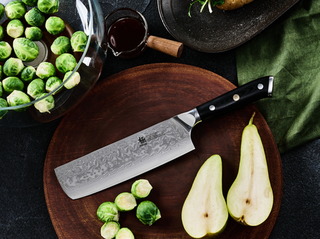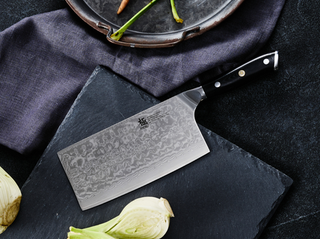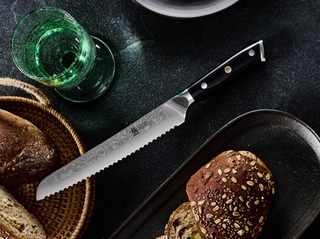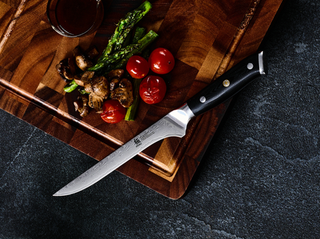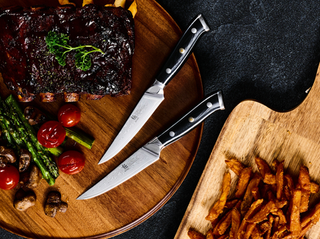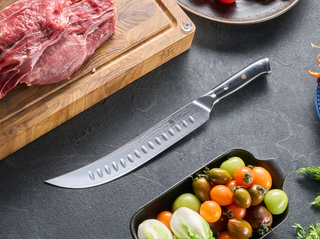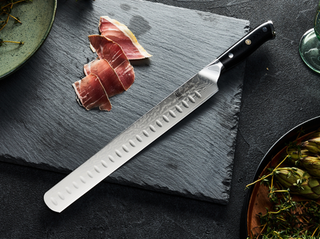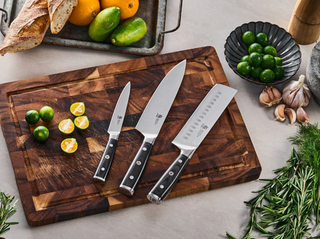While everyone's carving jack-o'-lanterns, let's explore a different way to use pumpkins this fall. Japanese cooking has long celebrated winter squashes, especially in their soul-warming soup recipe made with kabocha. With quality Japanese knives and smart ingredient choices, you can create something that'll make your usual pumpkin spice latte feel a bit... basic.

1. Why This Japanese Pumpkin Soup Recipe Stands Out
Think of kabocha as pumpkin's more sophisticated cousin. When Japanese chefs make pumpkin soup, they focus on two things most home cooks miss: knife technique and ingredient balance. Let's unlock these secrets with a chef's most trusted tool - the stainless steel Gyuto knife.
Before we start cooking, let's look at how this knife will help you:
- Getting Perfect Kabocha Cubes: The sharp blade allows for smooth slicing through tough skin.
- Dicing Onions Paper-Thin: A well-sharpened Gyuto makes it easy to achieve uniform pieces that cook evenly.
- Mincing Ginger Just Right: The versatility of the Gyuto lets you finely mince ginger, enhancing the flavor profile of the soup.
2. Prepping Your Ingredients Like a Pro

Here's where your Gyuto knife skills come into play. The way you cut each ingredient affects how it cooks and how the flavors blend:
Ingredient List
- 800 g (about 1.75 lbs) kabocha squash (or substitute with butternut squash)
- 1 large onion, finely diced
- 1 medium carrot, finely diced (optional for added sweetness)
- 3 tablespoons unsalted butter (or olive oil for a vegan option)
- 750 ml (about 3 cups) vegetable stock (or dashi stock for an authentic flavor)
- 125 ml (about ½ cup) heavy cream (or coconut cream for a dairy-free version)
- Salt to taste
- Chopped chives or parsley for garnish
Preparation Steps
- Kabocha Squash: Using the Gyuto knife, carefully slice the kabocha squash in half. Scoop out the seeds with a spoon. Peel the skin using the knife or a vegetable peeler, then cut the flesh into small cubes (about 2.5 cm or 1 inch).
- Onion and Carrot: Dice the onion and carrot finely using the Gyuto knife to ensure even cooking and flavor distribution.
- Ginger: Mince ginger finely, ensuring it is evenly distributed throughout the soup for optimal flavor.
3. Building Flavors: The Cooking Process
Now that your ingredients are prepped perfectly, let's build those deep, rich flavors that make Japanese pumpkin soup special:
Cooking Steps
- Sauté Aromatics: In a large pot, melt the butter over medium heat. Add the diced onion and carrot (if using) to the pot. Sauté until the onions are translucent and starting to brown, about 5 minutes.
- Cook Kabocha: Add the cubed kabocha squash to the pot and stir to combine with the aromatics. Pour in the vegetable stock or dashi stock, ensuring that the squash is submerged. Bring to a boil, then reduce heat to low. Cover and simmer for about 15-20 minutes, or until the kabocha is tender.
- Blend the Soup: Once cooked, turn off the heat and let it cool slightly. Carefully transfer the soup mixture to a blender or use an immersion blender to puree until smooth.
- Finish with Cream: Return the blended soup to the pot over low heat. Stir in the heavy cream (or coconut cream) and season with salt to taste. Heat gently without boiling.
4. No Kabocha? No Problem: Smart Swaps That Work
Can't find kabocha squash or other Japanese ingredients? Here's how to adapt without losing that authentic taste:
Substitution Guide
- Kabocha Squash: Substitute with butternut squash or acorn squash, which provide similar sweetness and texture.
- Dashi Stock: If dashi is unavailable, use homemade or store-bought vegetable broth as an alternative.
- Soy Sauce or Mirin: For recipes calling for these ingredients, use coconut aminos as a soy sauce alternative or a mixture of dry sherry and sugar for mirin.
- Heavy Cream: Substitute with coconut cream for a dairy-free option that adds richness.
5. Finishing Touches: From Good to Great
The final steps make all the difference. Here's how to get that silky texture and balanced flavor:
Final Steps
- After blending, return the soup to low heat.
- Taste and adjust seasoning as needed; adding more salt can enhance flavors significantly.
- Serve hot in bowls garnished with chopped chives or parsley for color contrast.

6. Pro Tips for Next-Level Results
Take your soup from good to great with these chef-tested techniques:
- Knife Skills: Practice your cutting technique with different vegetables; uniform sizes ensure even cooking.
- Browning Aromatics: Don’t rush this step; browning onions and carrots adds depth of flavor through caramelization (A process of browning of sugar).
- Texture Control: For an ultra-smooth texture, blend in batches if necessary; allow steam to escape by leaving the lid slightly ajar while blending hot soup.
7. Getting to Know Your Japanese Chef Knife
While Western chef knives try to do everything okay, a Gyuto knife is designed to do everything well. That's why professional Japanese kitchens rely on these knives for tasks from fine veggie cuts to meat slicing.
A well-balanced Japanese chef knife makes all the difference, and the Kyoku Gyuto knife proves this with every cut. Its blade is sharp enough to glide through tough kabocha skin yet precise enough to create paper-thin ginger slices. When you're preparing winter squashes for your soup recipe, this kind of accuracy matters - it's the difference between chunks that cook evenly and ones that don't.
Keeping Your Edge
Think you're working with a dull blade? That kabocha isn't going to cut itself (at least not safely).
If you want to keep your Gyuto knife in perfect shape, then check out our guide on "How to Sharpen Your Knife with a Whetstone". It's easier than you might think, and your soups (and fingers) will thank you.
Conclusion
As autumn winds pick up, there's something special about serving a hot Japanese soup. Whether you're using traditional winter squashes or clever substitutes, your Gyuto knife skills and these Japanese cooking techniques will help you create something that's both seasonally perfect and uniquely delicious.
So while others are scooping out pumpkins for decorations, you'll be mastering authentic Japanese cooking with a soup recipe worth sharing. Now that's a Halloween treat that goes beyond the ordinary.
